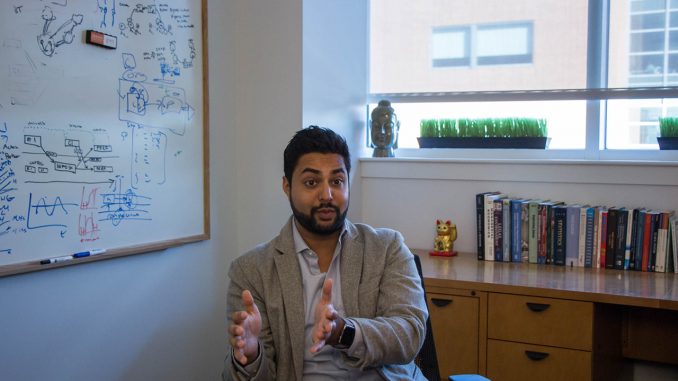
During his childhood, Ravi Kudesia’s uncle exposed him to mindfulness practices through meditation when visiting from India.
“He had learned a bunch of these practices and passed them on to me,” said Kudesia, an assistant professor of human resource management.
Now in his career, Kudesia studies mindfulness, or the practice of achieving awareness of thoughts, emotions and experiences, and how it can be effective in the workplace. The practice is becoming popular among individuals in the workplace as a means of fostering stress-relief and overall positive well-being, according to HelpGuide, a nonprofit mental health and wellness website.
Kudesia published an article, “Mindfulness as a Metacognitive Practice” in the Academy of Management Review in June, which focuses on practicing workplace mindfulness as a context-based practice.
His theory is rooted in metacognition, or the awareness of one’s own learning or thinking processes.
“If I can notice what I’m doing in my own mind, then I can adjust it,” he said. “If you don’t notice what’s happening in your own mind, how are you ever going to change it?”
Metacognition-related self-awareness, like mindfulness, is valuable because of its potential to positively impact mental health, said Janie Egan, the mental well-being program coordinator at the Wellness Resource Center.
The Wellness Resource Center started offering once-a-month “Mindfulness Basics” sessions for the first time this semester. The sessions offer different kinds of guided meditation, like body scans and breathing exercises.
“Self-awareness is something we can cultivate with mindfulness,” Egan said. “By being aware of ourselves, we can give ourselves what we need so it can support our mental health in that way.”
Kudesia began work-focused mindfulness and meditation practices when he realized the difficulty of balancing work and self-needs after graduating from Boston University with a bachelor’s degree in business administration in 2008.
“I realized it’s extremely hard to detach self from work, and things like stress and those sorts of pressures were really intense,” he said.
Kudesia then became increasingly interested in practicing mindfulness, participating in exercises like a meditation retreat that required him to focus on breathing for roughly 14 hours straight.
“If all you’re doing is paying attention to the sensation of breathing at the tip of your nose, you can go deep — incredibly deep — with that,” he said.
Maria Danielle Williams, a junior secondary education major, said she implements mindfulness practices with her preschool students at Children of America, a daycare in Southampton, Pennsylvania. She uses exercises, like deep breathing sessions and kiddie yoga, to help them begin developing self-regulation skills.
“Emotions fuel all of our behavior as human beings,” Williams said. “But, we tend to forget that they begin and end with the person that is feeling them.”
Kudesia encourages students to explore their curiosities and consider the voices of others.
“One of the most courageous things you can do is to be a little bit more willing to step back, notice your thoughts and feelings and realize that [your] thoughts and feelings are not necessarily reality, they’re not the final truth on any matter,” he said.


Keep it up may God give all +ve thoughts